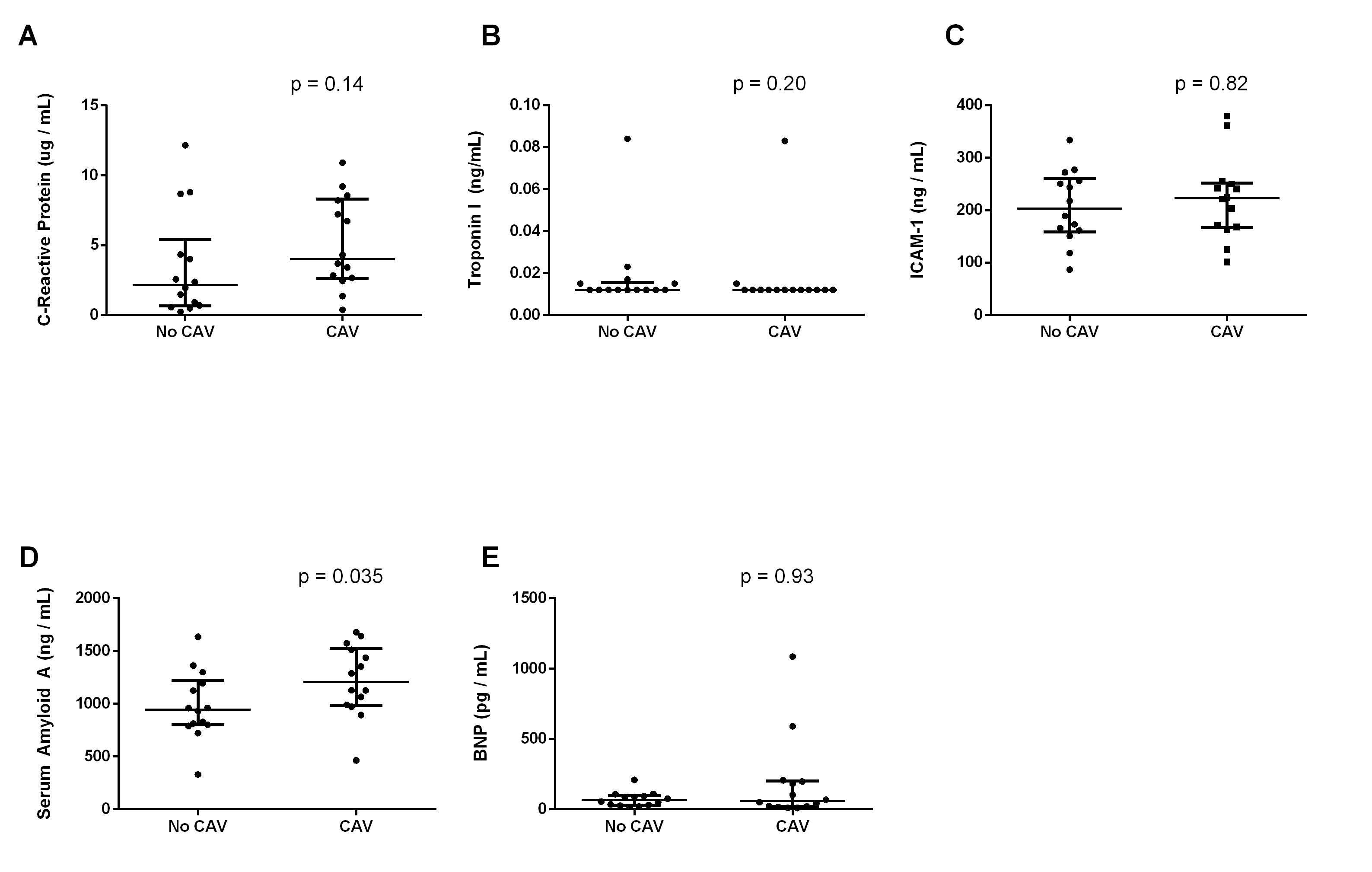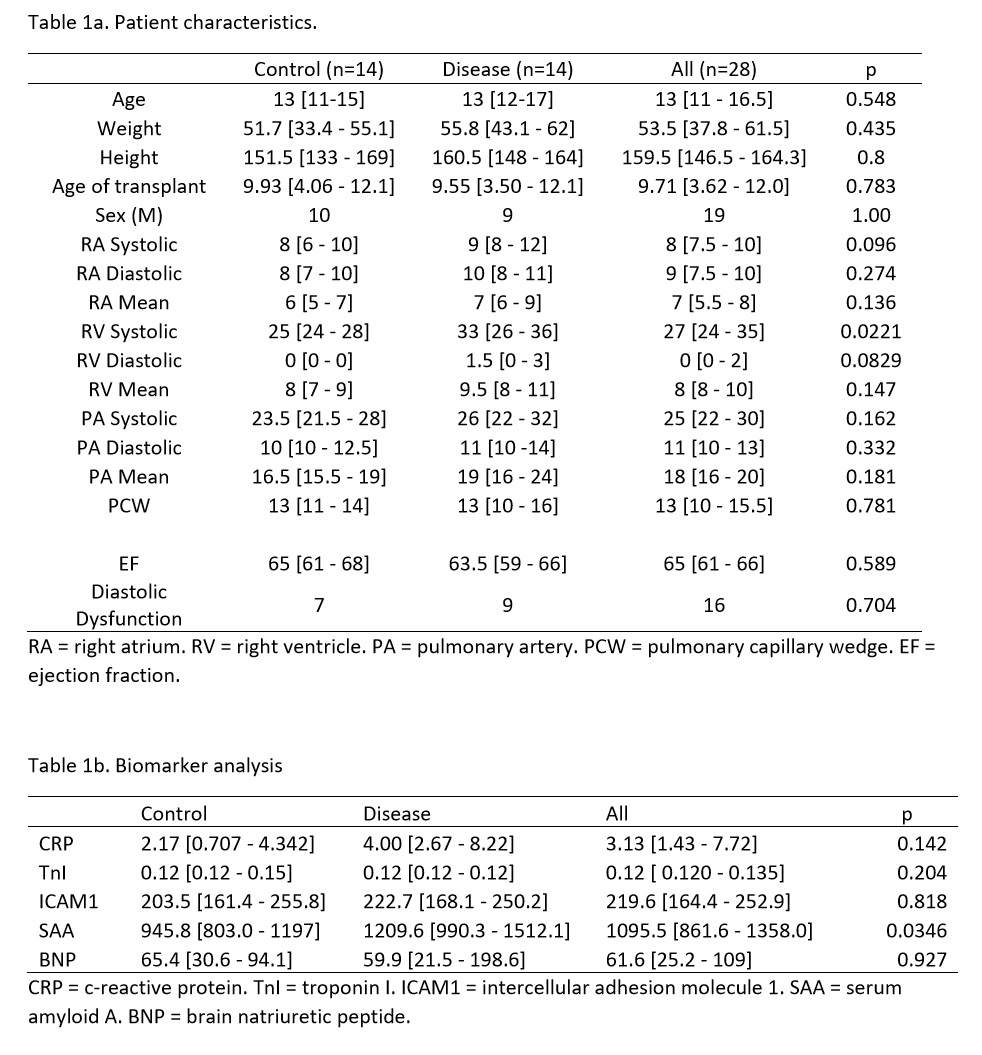YIA-2
A pilot study of biomarkers for the detection of coronary allograft vasculopathy after pediatric heart transplant
1Vu E, 2Rusin C, 2Dreyer W, 1Devaraj S, 1Easley R, 1Andropoulos D, 1Brady K
1Baylor College Of Medicine, Houston, TX, United states; 2Texas Children's Hospital, Houston, TX, United states
Introduction: Cardiac transplantation is the definitive treatment for end-stage heart failure and over 500 pediatric orthotopic heart transplants (OHT) are performed yearly. In the pediatric population, this is the treatment option for uncorrectable congenital malformations, failed palliation, cardiomyopathies, and end-stage heart failure. Beyond the first year, a major cause of mortality (affecting 50% of patients) is coronary allograft vasculopathy (CAV). Diagnosis of disease remains difficult due to nonspecific symptomatology. We hypothesized that elevated biomarker levels are associated with CAV, and combinations of biomarkers will yield an improved diagnostic test for CAV that is more sensitive and specific than individual biomarker testing.
Methods:After IRB approval, all patients undergoing cardiac catheterization after OHT at a tertiary children's hospital were approached for enrollment whereby a sample of blood was collected prior to the procedure. All patients who were given a diagnosis of CAV were matched with patients without disease based on age of allograft, patient age, and sex in that order of importance.All samples were tested for levels of: c-reactive protein (CRP), troponin I (TnI), intercellular adhesion molecule-1 (ICAM-1), serum amyloid A (SAA), and brain natriuretic peptide (BNP) levels. In addition, hemodynamic measurements made during cardiac catheterization were recorded in all patients. Nonparametric statistics were completed with Stata 14 Software (College Station, TX; USA) comparing biomarker levels and hemodynamic variables between patients with and without CAV.
Results: 150 patients were enrolled in a 1-year period of this ongoing study. The 14 patients(9.3%) diagnosed with CAV were matched based on patient characteristics (table 1a). There was an 80% increase in SAA levels between patients with (2.17 ng/mL) and without (4.00 ng/mL) CAV (p = 0.03). All other biomarkers did not show a significant difference (table 1b). There was a significant increase in right ventricular systolic pressures in patients with CAV (33 mmHg vs. 25 mmHg, p = 0.02) (table 1a).
Summary: The objective of this pilot study was to study biomarkers in the evolution of CAV in efforts to develop a multivariate biomarker panel to assess risk. In this preliminary analysis after 1-year, SAA levels, a marker of cellular inflammation,are significantly elevated in subjects with CAV and may be an important tool for diagnosis and screening.
Top













